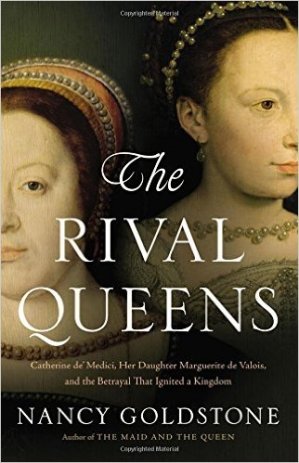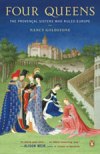 If Shonda Rhimes were to write a book about Renaissance France, it would likely resemble The Rival Queens—a dramatic and almost soapy page-turner by Nancy Goldstone. I don’t mean this as a knock, but more as another case of truth being stranger than fiction.
If Shonda Rhimes were to write a book about Renaissance France, it would likely resemble The Rival Queens—a dramatic and almost soapy page-turner by Nancy Goldstone. I don’t mean this as a knock, but more as another case of truth being stranger than fiction.
The court of the Valois Kings was a treacherous place, rife with scheming, betrayals, love affairs, and murder. G.R.R. Martin has cited this era in France as a source of inspiration, and fans of his books (or of the Game of Thrones TV series) will recognize parallels and at least one major plot development.
The Rival Queens are Catherine de’ Medici and her daughter, Marguerite de Valois—two singular and fascinating women who both were queens of France. Their fractious relationship was par for the course in the House of Valois, which seemed to have nurtured few familial bonds. Catherine pitted her children against each other to the extent that they were, at times, in greater danger from one another than from their professed enemies.
Her oldest son, Francis I, was sickly and died not long after marrying Mary Queen of Scots. The younger brothers schemed and connived as they competed for the throne. Two of them succeeded to the crown, and Marguerite was married off to become Queen of Navarre. However, this made her position even more tenuous, and she had some close and harrowing escapes from assassins and kidnappers sent by her mother and her brother, King Henri III.
Goldstone felt that historians had been unkind to Marguerite and wanted to tell her story in a more sympathetic light. I must say that I came away with a real respect for this woman who thought fast under pressure, maneuvered through relentless threats, and somehow managed to survive. Also, unlike her mother, she was very popular with the French people who called her “Queen Margot.”
Goldstone zooms out to show how European rivalries and the rise of Protestantism fueled the wars at court. In addition to Mary Queen of Scots, both Elizabeth I of England and Phillip II of Spain appear as significant influences on French politics and diplomacy.
The book offers historical detail and insights into daily life, but its salacious tone reads more like a Philippa Gregory novel than a scholarly biography. Not that there’s anything wrong with reading Gregory. I enjoy her novels, but I know they are fiction. I find it disturbing, though, when “nonfiction” veers into unfounded supposition and sensationalism.
For example, without any cited source Goldstone credits Nostradamus as predicting “the tragic death of Princess Diana” and “the horror of 9/11.” Seriously? Which prophecies and which translations? This feels rather spurious and hokey. In particular, the 9/11 claim has repeatedly been proven to be a hoax—here I cite Snopes and LiveScience.
Goldstone is capable of much better than that and seems to have gotten a bit swept up by the melodrama of her material. I actually preferred her earlier work, Four Queens: The Provençal Sisters Who Ruled Europe, as that felt more weighty and academic, while still being so readable. However, I think that readers will take to this fictionesque style of writing—The Rival Queens really is hard to put down.
Overall, I recommend this book. It’s a riveting account of two extraordinary queens and of the machinations of a dynasty that is just as intriguing as the Tudors but has gotten much less attention.
Four Queens: The Provençal Sisters Who Ruled Europe by Nancy Goldstone





